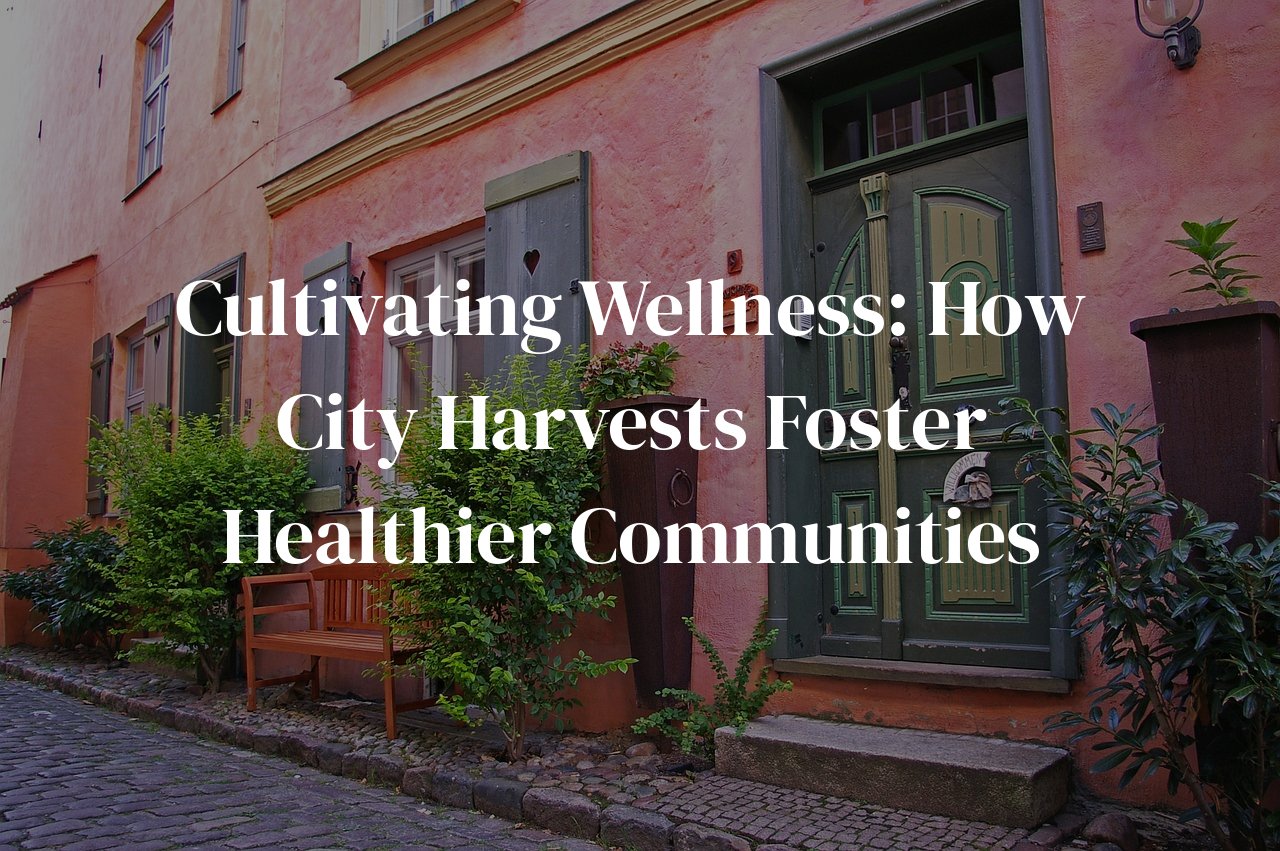
Amid the hustle of city life, a green revolution is quietly unfolding, transforming concrete jungles into lush, edible landscapes. This blog post delves into the heart of urban farming—its profound impact not just on urban landscapes, but on the very health and wellness of community dwellers. With food security, nutrition, and social bonding rooted in its core, urban agriculture emerges as a beacon of communal well-being. As we navigate this journey together, you’ll uncover how these green spaces cultivate more than just food—they sow the seeds for a revitalized, health-centric urban existence.
Table of Contents
The Roots of Urban Farming: Nourishing Body and Mind
The philosophy behind urban farming is grounded in the principle that food should not only sustain us physically but also support our mental well-being. In the verdant havens of urban gardens, there’s a symphony of benefits that resonate with our most basic human needs. The roots of urban farming are not just in the soil, but in the intricate relationship between people and plants. It’s an age-old tradition modernized to suit the concrete jungle, providing a nourishing lifeline in the most unexpected of places.
Urban farming initiatives are multifaceted; they are areas for cultivation, yes, but also educational hubs where people can learn about nutrition, sustainable living, and the importance of local produce. In nurturing a plant from seed to harvest, city dwellers develop a connection to their food that is often lost in the hustle of urban life. This reconnection fosters a sense of responsibility and wellbeing that extends beyond the individual, growing into the community.
As these green plots yield their bounty, they also provide a sensory experience that is rare in urban environments. The fragrance of fresh herbs, the kaleidoscope of ripe vegetables, and the texture of rich soil under fingertips are sensory interactions that can enhance mood and create a peaceful respite from city stress. For mind and body, urban farms offer a sanctuary of healthful tranquility.
Most importantly, perhaps, is the empowerment that urban farming instills. Being able to grow one’s own food delivers a powerful message: that with patience and care, we can sustain ourselves. This empowerment can have profound psychological effects, reducing feelings of helplessness and anxiety in a fast-paced, often impersonal urban setting.
Together, the physical harvest and mental harvest of urban farming create a bountiful feast for city-dwellers. It is a holistic approach to wellbeing that sows the seeds of personal and community health, proving that even a small patch of green has the potential to transform lives.
Harvesting Health: The Nutritional Advantages of City-Grown Produce
The surge in urban farming is seeding a remarkable health revolution, transforming concrete jungles into lush fortresses against malnutrition. Nurtured within the embrace of metropolitan life, city-grown produce stands as a testament to freshness and minimized transportation lag, ensuring local residents can feast on vegetables and fruits that boast peak nutritional value. The shorter the time from farm to fork, the more likely it is that essential vitamins and phytonutrients are preserved, offering a powerhouse of benefits with every plate.
Moreover, recent studies have highlighted the superior quality of urban produce, hinting at higher organic matter content in the soil of city gardens, which often translates to a richer array of micronutrients absorbed by the crops. Leafy greens, tomatoes, and herbs cultivated in these patches become not just food, but potent contributors to health, packing a punch of antioxidants, vitamins C and K, potassium, and dietary fiber. Such components play a crucial role in combating the modern plagues of obesity, heart disease, and diabetes, rendering the initiative less of a trend and more of a lifestyle prescription.
City dwellers who immerse themselves in urban agriculture likewise unearth the therapeutic joys of a harvest. Engaging with the soil and nurturing plant life have been shown to enhance mental well-being, acting as natural antidepressants. This green therapy, coupled with the clean and nutritious yield of their labor, lays down the roots for a holistic approach to wellness, where physical nourishment and mental peace sprout from the same bed.
Ultimately, city harvests carve out a resilient shape of community health, fostering an environment where fresh produce is the linchpin of a robust nutritional framework. In every terrace garden, rooftop farm, and community plot, the promise of enhanced well-being grows, turning urban centers into habitats where good health is cultivated, harvested, and savored.
Cultivating Community: Urban Gardens as Social and Health Catalysts
Amid the hustle and bustle of city life, urban gardens emerge as verdant sanctuaries, fostering not just flora but also community and well-being. This aspect of urban farming extends beyond the cultivation of plants to cultivating connections among city dwellers, often becoming hubs of social interaction in concrete jungles. As neighbors unite to sow seeds, they also sow the roots of lasting friendships, bonding over shared experiences in caring for their collective green space.
Community gardens invigorate neighborhoods by transforming underutilized or vacant land into vibrant gathering places, combating social isolation by providing a locale for intergenerational and multicultural exchange. They offer a venue for educational programs where children and adults can learn about nutrition, plant biology, and the environment, bridging the gap between urban life and the natural world. Engaging in gardening activities, residents also partake in gentle, restorative physical activity, vital for maintaining mental health and mitigating stress.
Additionally, these gardens encourage participation across diverse socioeconomic backgrounds, promoting inclusivity and shared experiences in urban settings. They become integral to community identity and pride, where the fruits of labor are not just the harvested produce but also the strengthened sense of belonging and community resilience. By empowering residents to take ownership of local food production, they instill a ‘can-do’ spirit, elevate collective self-esteem, and foster cooperative community action towards wellness and sustainability.
The ripple effects of these social interactions are profound. As individuals connect with neighbors, they develop informal support networks, crucial during times of individual or collective hardship. Urban gardens can nurture emotional well-being and offer a sense of peace and sanctuary, a slice of tranquility amidst urban sprawl. These green spaces provide a backdrop where laughter mingles with the hum of bees, where anecdotes and advice are as readily exchanged as seeds and seedlings.
Ultimately, by knitting together the fabric of the community, urban gardens act as catalysts for social and health enhancement, demonstrating that in every community garden lies the seed of societal nourishment – emotional, physical, and psychological. The gardens become not just places that feed us but spaces that sustain our collective human spirit.
Seeds of Change: How Urban Agriculture Reduces Food Deserts
Urban agriculture manifests as a beacon of hope in the arid landscapes of food deserts, areas that lack accessible, healthy food options. By converting vacant lots and rooftops into plots of verdancy, urban farming introduces fresh produce where processed and convenience foods once held dominion. This green transformation bridges the gap between farm and fork, drastically reducing the miles food must travel to reach urban consumers, thereby enhancing the freshness and nutrient content of the harvest.
The proliferation of community gardens and city farms also empowers residents with the agency to cultivate their sustenance. It democratizes food, shifting control from supermarket shelves to the hands of the people. Such empowerment not only ensures a supply of affordable, nutritious food but also fosters a sense of ownership and pride among community members. They become stakeholders in a local ecosystem of health, reaping the benefits of what they sow.
Moreover, urban agriculture acts as an educational platform, illustrating the value of nutrition and the skills of cultivation. For the younger generation, these are lessons that resonate beyond the confines of the garden. They lay the groundwork for lifelong dietary habits, sowing the seeds for a future where convenience food does not eclipse the importance of wholesome, health-giving meals.
Introducing urban farming to food deserts can also stimulate social relationships and financial economies. Farmers’ markets and cooperative models of selling produce keep the economic benefits within the community, promoting self-sufficiency and resilience. As vacant spaces turn into vibrant nodes of community interaction, they challenge the inertia of inaccessibility that food deserts are known for.
Lastly, urban agriculture exemplifies ecological responsibility, showcasing how sustainable practices can directly contribute to the health of a community. By integrating composting, rainwater harvesting, and plant diversity, city farms are not only sources of nutrition but also pioneers of an environmental ethic that cultivates a healthier urban ecosystem. It’s a journey from desolate food deserts to diverse food havens, narrating a tale of transformation, rooted in the earth of the cities themselves.
Green Prescription: Urban Farming as a Tool for Preventative Health Care
The concept of a Green Prescription refers to the integration of nature-based solutions into the healthcare paradigm, where urban farming takes center stage as a proactive measure to enhance public health. Embracing the therapeutic attributes of horticulture, urban agriculture becomes not only a provider of fresh produce but also a wellness hub, where individuals engage in the cultivation of foods as part of a holistic lifestyle.
Urban Farming and Mental Health: Gardening has been shown to have substantial mental health benefits by reducing stress, anxiety, and depression. The act of growing plants, according to horticultural therapy, can enhance mood and provide a sense of accomplishment. In overpopulated city landscapes, where green space is often in short supply, urban farms can serve as valuable oases that anchor community mental wellness programs.
Physical Activity through Urban Horticulture: The act of farming—digging, planting, weeding, and harvesting—is a form of moderate physical exercise. This activity promotes cardiovascular health, muscle strengthening, and flexibility, all vital aspects of physical well-being. In urban contexts, where sedentary lifestyles predominate, regular participation in urban farming can counteract the risks of physical inactivity.
Access to Nutrition and Health Education: Urban farming initiatives often couple the provision of fresh produce with educational programs about nutrition and healthy eating habits. Understanding how to grow food fosters a deeper appreciation for whole foods and can lead to lasting dietary changes, reducing the propensity for chronic diseases associated with poor diet, such as type 2 diabetes, obesity, and heart conditions.
Fostering Social Cohesion for Healthier Lifestyles: Community gardens can be the glue that binds neighborhoods together, creating a sense of belonging and collective purpose. Engaged communities are known to foster social support networks that can lead to better health outcomes, as individuals are more likely to adopt healthy behaviors when supported by their peers.
Environmental Health Impacts: Urban farms contribute to environmental health by improving air quality and reducing urban heat islands. In the larger picture, healthier environments translate to healthier residents. Proximity to green spaces and reduced exposure to air pollution have been linked with lower rates of respiratory diseases, a fresher urban environment, and overall enhanced public health.
The Preventative Health Care Model: By incorporating urban agriculture into urban planning, city officials endorse a preventative health care model that not only aims to treat but also prevent illness. This model reinforces the principle that health begins where we live, work, and play, with urban farming playing an instrumental role in shaping salutogenic environments—those that support health and well-being.
Conclusion
In conclusion, the tendrils of urban farming stretch far beyond the aesthetic appeal, intertwining with the very fabric of urban health and community dynamism. Thriving urban gardens are not merely sources of fresh produce; they are corners of solace and connection, classrooms for nutrition education, and frontiers in the battle against food scarcity. The full potential of urban farming is yet to be harvested, but even now, these patches of green are reshaping our approach to health within the urban canopy, promising a future where wellness is sown into the heart of our cities.



